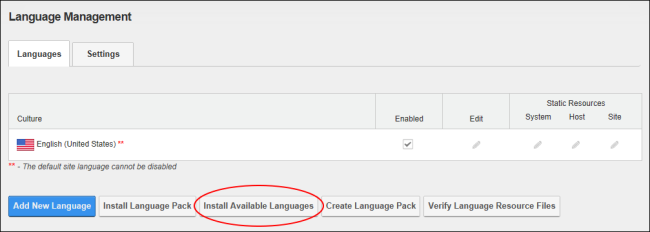How to install one of the language resource packages that is included by default with the DNN applicationRefers to a single installed instance of DNN and all the sites within that installation as listed on the Host > Site Management page.. Once installed, the language pack will be available to all sites within this installation. Restricted to SuperUsers.
Tip: Language Packs can also be installed via the HostThese users have full access to manage the settings and content of all sites with this DNN installation, including the Host site. SuperUser accounts are created using the Host > SuperUser Accounts module. > Extensions page (See "Deploying or Downloading Available Extensions") or the AdminRegistered users who are members of the Administrators role. These users have full access to manage the site including adding, deleting and editing all pages and modules. Administrators also have access to the Admin pages located on the main menu. > Advanced Configuration Settings page, See "Deploying Language Packs"


